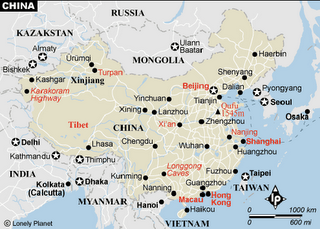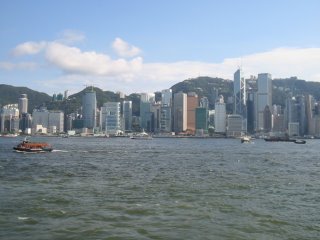can you taste the air?
Tuesday, June 06, 2006
CNN's Inside Asia segment last Sunday took a look on Asia's pollution crisis.
Why the special focus on our region?
It's because we have here the world's most polluted country, and majority of the world's most polluted cities/places.

The first honor goes to the giant itself, China, having 16 of the most polluted cities/towns in the world, including the worst of the lot, the provincial town of Linfen, according to a recent survey.
Linfen, home to an estimated 214,000 population, is a steel and coal factories town. It is extremely polluted that there are dead animals everywhere, particularly near the poisoned creeks or rivers, and that the people cannot grow trees, plants, or crops - all because of the toxic emissions from these factories. Needless to say, the main cause of death of the residents over the years has been linked to pollution.
Beloved Hongkong is not saved, either. Whether it is in the list or not, I am not sure. But here's something juicy: those pictures we see (on updated brochures or postcards for
 example) of the beautiful Victoria Harbour and other tourist spots, amidst clear and sunny skies, might have been digitally enhanced as it is almost impossible now to regale in the picturesque view of Hongkong with all that smog, except on a really, really good day.
example) of the beautiful Victoria Harbour and other tourist spots, amidst clear and sunny skies, might have been digitally enhanced as it is almost impossible now to regale in the picturesque view of Hongkong with all that smog, except on a really, really good day.While causes of Hongkong's pollution can be considered internal, traceable to its transportion system and the increasing number of vehicles among others, what is actually interesting to note is its close proximity to Guangzhou, which has numerous steel and coal factories like Linfen.
Which brings us to this case in point: pollution, like so many other things and resources, can be exported - whether in the same region, or across the oceans.
What's scary is that this is a "product" we can never refuse.
5 Comments:
- At 8:14 PM, June 06, 2006, said...
-
The sad part about this is that pollution is almost always tied to industrialization. Countries with heavy industries such as steel maufacturing suffer from it.
And yet, not country can really be called an industrialized nation without its own steel industry. Kinda like a catch 22 situation...
BTW, pollution in HK isn't as bad as ours here. Try viewing Victoria Harbour during the winter months when the skies are clearer. But I prefer to view it during nighttime with all those neon lights aglow. :-) - At 9:46 PM, June 06, 2006, said...
-
When I came here to Norway. It was my first time to breath such a clean air. You can even see mosses on trees. A sign that the air is clean and pure.
I hope people in Asia can find ways to fix this up! - At 10:17 AM, June 07, 2006, vina said...
-
hi SNGLGUY. you're right, industrialization and pollution go together - but something can be done about the latter. the catch is: only if you are a rich and developed country/city.
for example: the town of kawasaki in japan, which invested millions of dollars into a technology to counter the effects of their factories.
with regards to our own pollution problem, i was actually waiting for the show to feature our country, but it did not. maybe we're not as important a country as china and japan are? or maybe it wasn't just an extensive coverage, that's all. - At 10:22 AM, June 07, 2006, vina said...
-
hi CHAS. good for you, you are able to breathe clean and fresh air there. the closest i could get to inhaling the same quality is when i go home to bacolod.
i hope we could ALL do our share in preventing pollution, wherever we may be, don't you think? we all live under the same skies. - At 1:15 PM, June 07, 2006, tin-tin said...
-
so how did the philippines rate? but now there had been projects to lower the pollution rate in the world, and our country could gain from it: clean development mechanism (teka! tama ba? basta cdm. hehe). we would plant trees or grow a forest, so as to lessen the pollution problem, and other countries will pay us for that.




